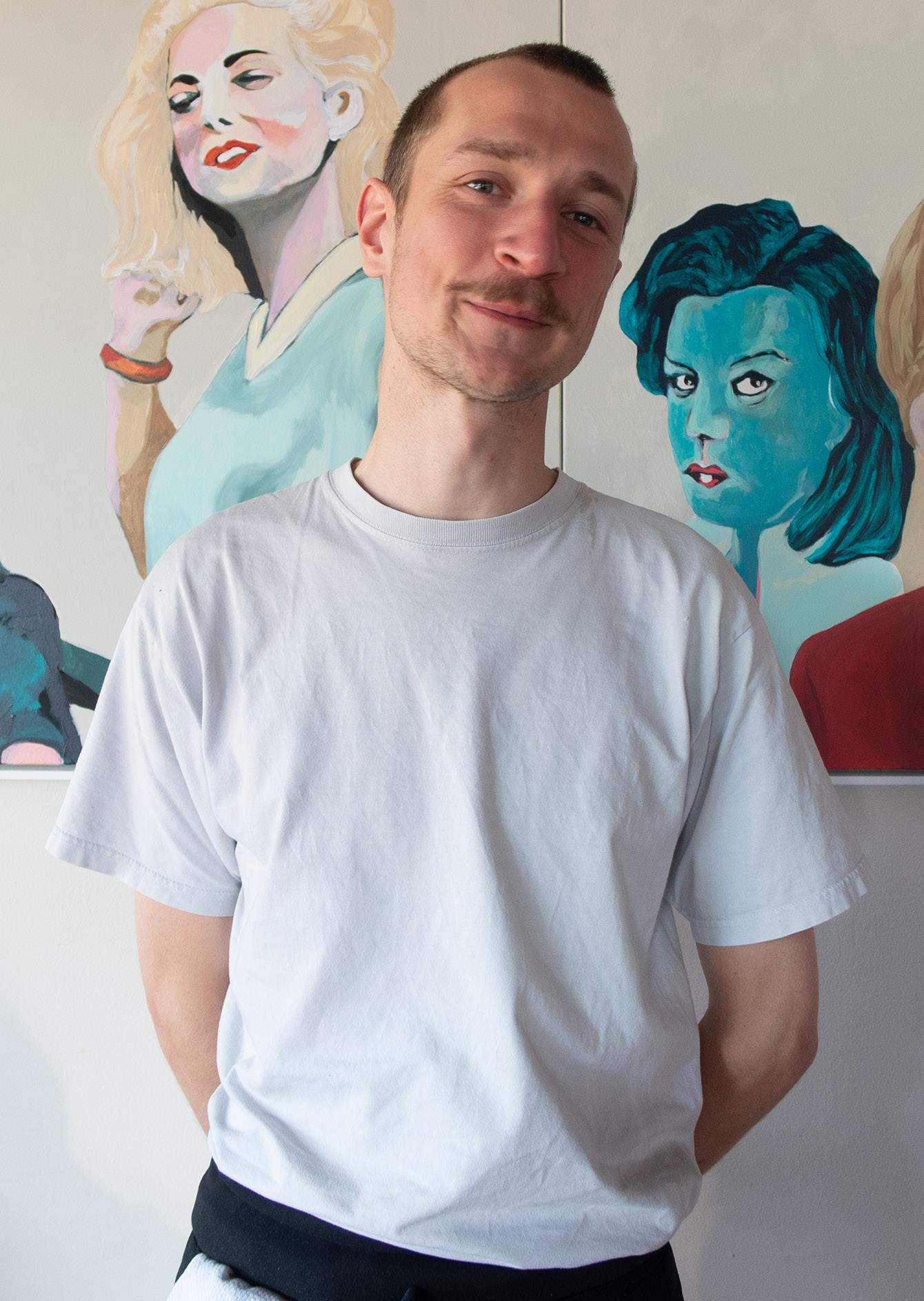
6 minute read
PROFILE: GASPARD DE RANCOURT
Gaspard de Rancourt
Café Freda’s new head chef on making the move from Paris and discovering a new gastronomic world in Sydney.
WORDS Annabelle Cloros
GASPARD DE RANCOURT spent years working in Paris before he made the move to Sydney a few months back. The chef came up in the kitchens of Les Résistants — La Table (formerly L’Avant-Poste) and Elmer Paris, where he learned from Michelin-star chefs lauded for their commitment to upping the stakes with regards to sustainability and gastronomic excellence. de Rancourt is part of a new wave of culinary talents doing things their way — and we’re fortunate enough to have him on our shores.
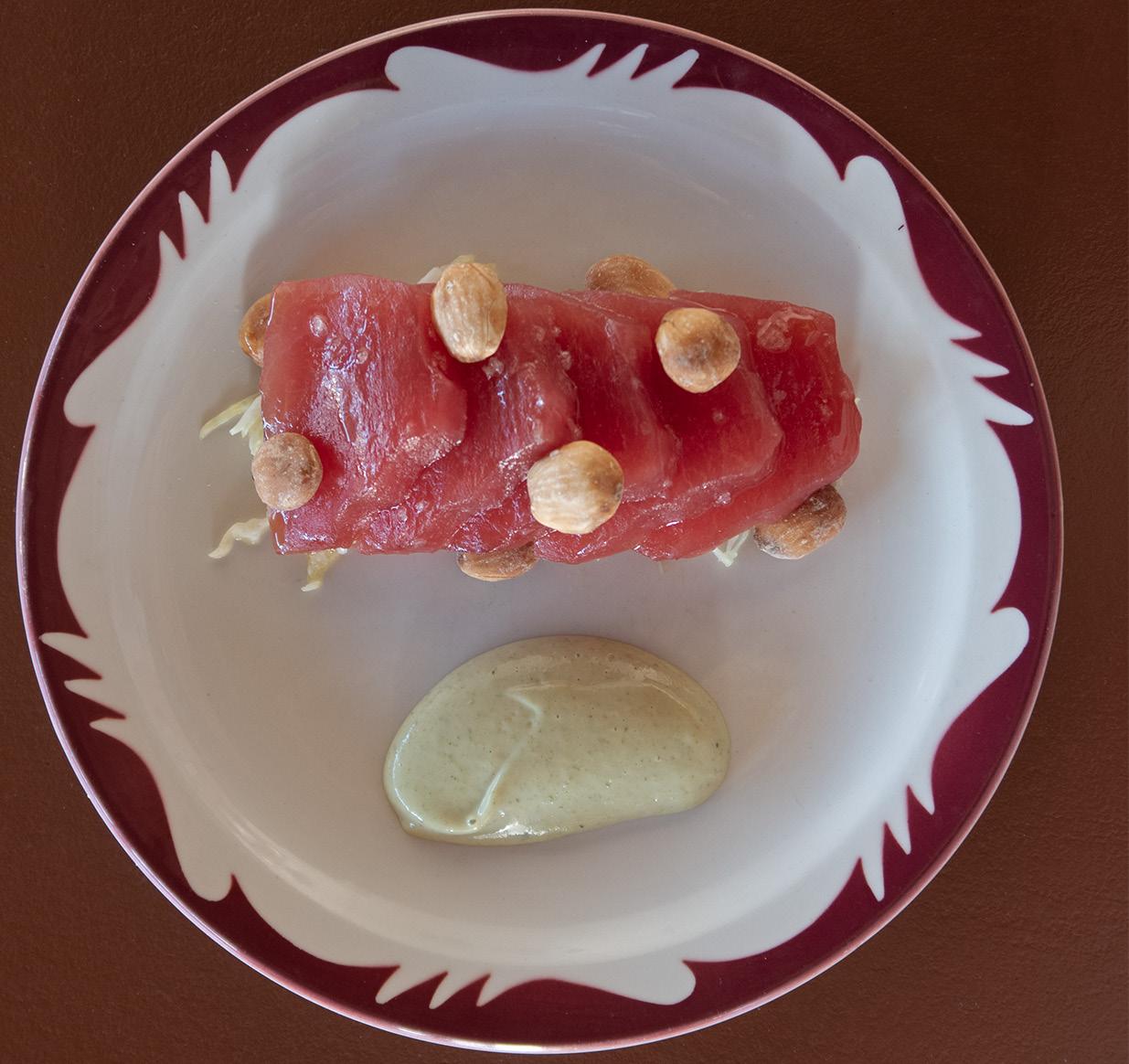
The chef speaks to Hospitality about his time working in Paris, the differences in seasonality and produce, and how he’s plating up dishes you may have never come across before.

There were three key factors that went into Gaspard de Rancourt’s decision to leave Paris behind for Sydney. The first? The opportunity to improve his English. The second and third are culinary-related — for the most part. “I spent too much time working in Paris,” he says. “I think Sydney gastronomy is interesting because chefs make whatever they want here, which is similar to how it is in Paris. It’s also an interesting place because of all the produce and proximity to Asia — we don’t have the same produce in Europe.”
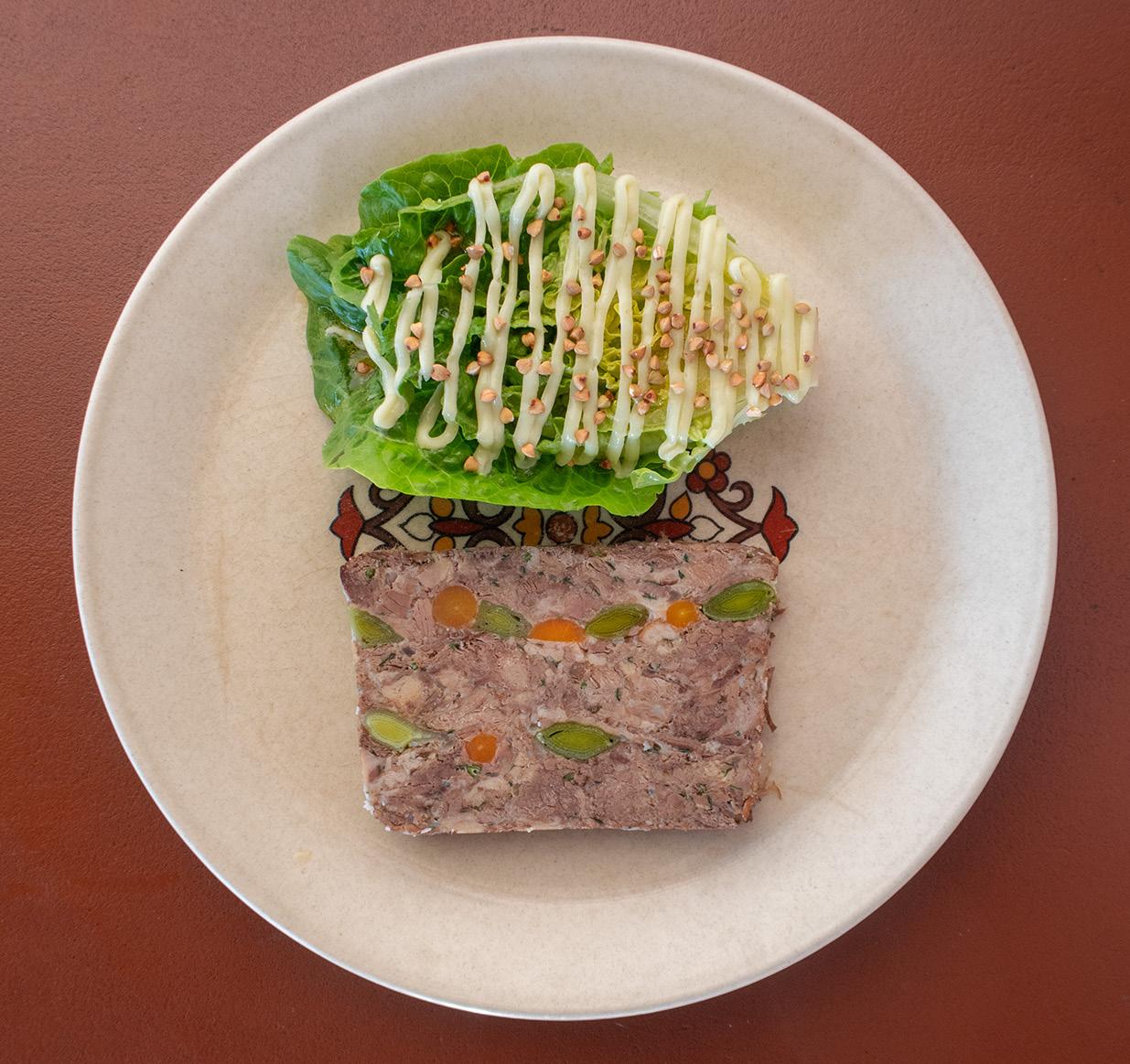
While the chef was keen on a location change, there’s no skipping over the invaluable learnings he gained working at L’Avant-Poste, which has relaunched as Les Résistants — La Table. The restaurant has a nine-point checklist that all products must meet covering animal welfare and pricing to traditional farming methods and sustainability. While the list is general, the restaurant has also published defined criteria on every product the kitchen uses and its environmental impacts.
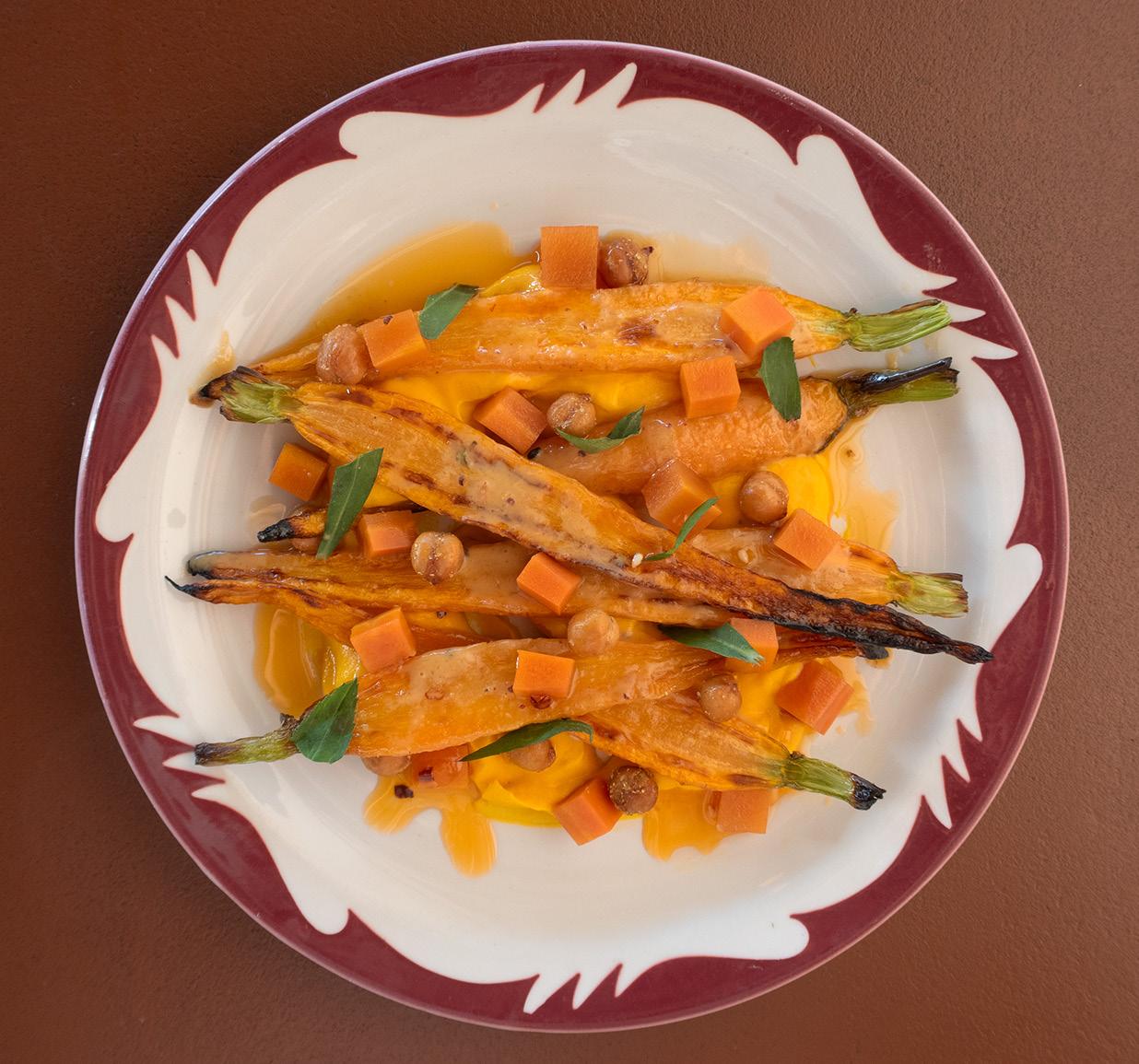
There’s no doubt working in a kitchen with such parameters is limiting, but the restrictions inspire chefs to think far, far outside the box. “We were trained to work with full animal carcasses and the seasons,” says de Rancourt, who joined as a sous chef before being promoted to head chef. “We would take produce from farmers versus ordering it, and the objective was always ethicality. We couldn’t use any products that were transformed by the industry, so many things were impossible. I worked with two chefs there who were very different — one was creative and the other was from a two Michelin star restaurant and more gastronomic.”
It’s about creating different layers … with the precise tastes hitting your mouth at different moments.
– Gaspard de Rancourt
After two years at the restaurant, de Rancourt decided to complete a one-month internship at Bar Brutal in Barcelona before making his way to Sydney. The bar is known for its natural wine program and seasonal food menu that showcases regional produce from marinated fish to cheeses and oysters. The offering is very much driven by produce availability, with de Rancourt plating up a unique dish each night. “It was really different from what I used to do, but very cool,” he says.
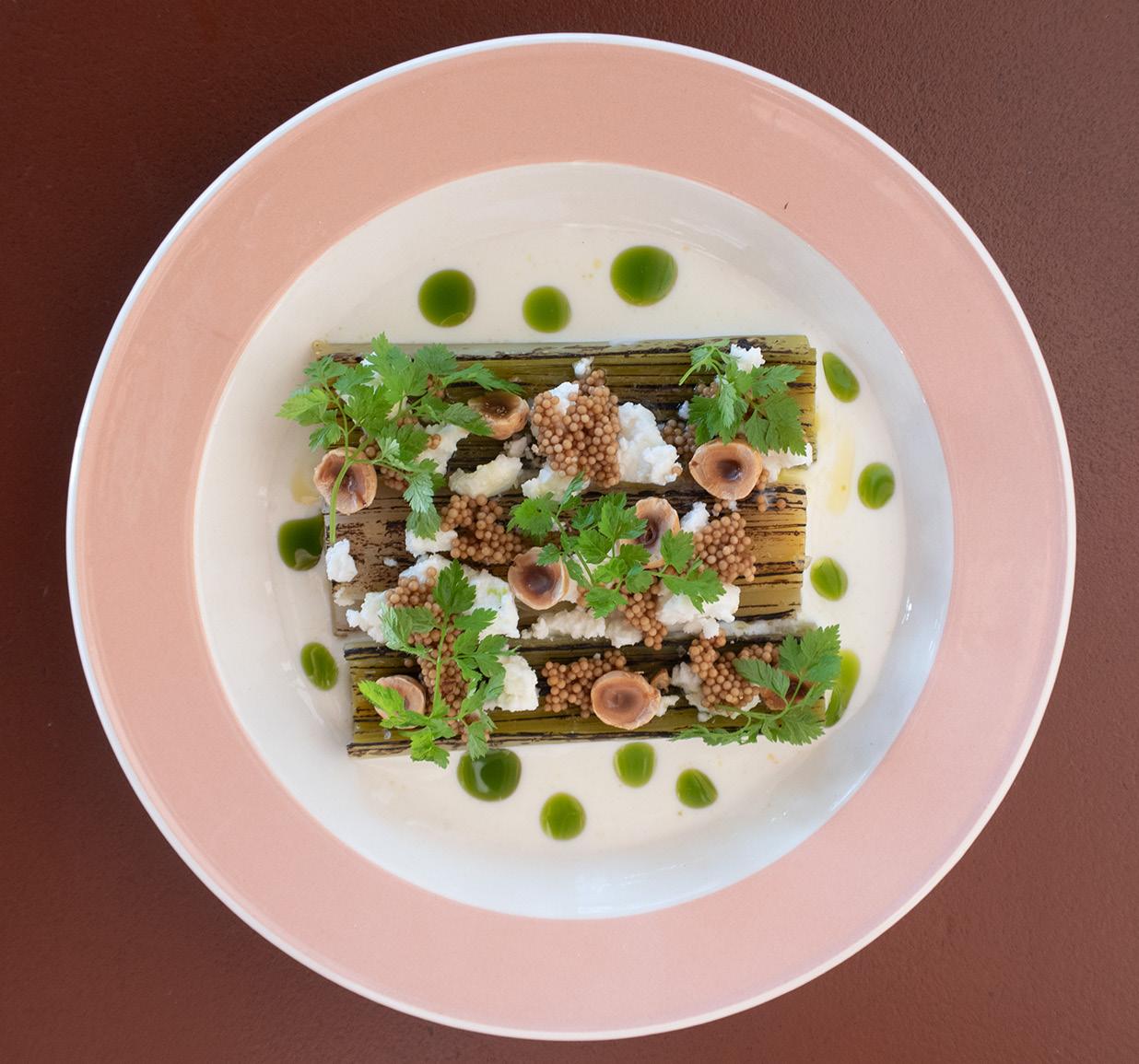
The chef initially hoped to work with Josh Niland at Saint Peter or Fish Butchery in Sydney, but a chance opportunity to join Café Freda’s presented itself instead and de Rancourt landed the head chef position. His first menu went live in May, with the offering marking a new chapter for the Taylor Square restaurant. Snagging a chef of de Rancourt’s calibre was a huge get for the venue, with Owner David Abraham keen to offer guests a unique dining experience.

“Whilst Café Freda’s is very much informed by Sydney, its culture, and its location, it is at its roots a European-style wine bar,” says Abraham.
“Finding a chef of Gaspard’s standard is rare given the volume of restaurants and bars in Sydney. The most exciting thing about having Gaspard is we get to experience a little bit of the skill, talent, and creativity you would rarely find outside of Parisian bistros and wine bars.”

The chef’s debut menu is split into snacks (all day) and share (until 10pm), and largely focuses on vegetables as well as seafood, with no set rules besides creating dishes guests can share — and taking the kitchen’s lack of extraction into consideration, “which is a challenge”, he says. “For me, it’s a good definition of a bistro. I am really excited to try things and I want to work with whole fish, but it would be too much to order a 50kg tuna compared to what we are selling, so I will have to come up with some new ideas.”
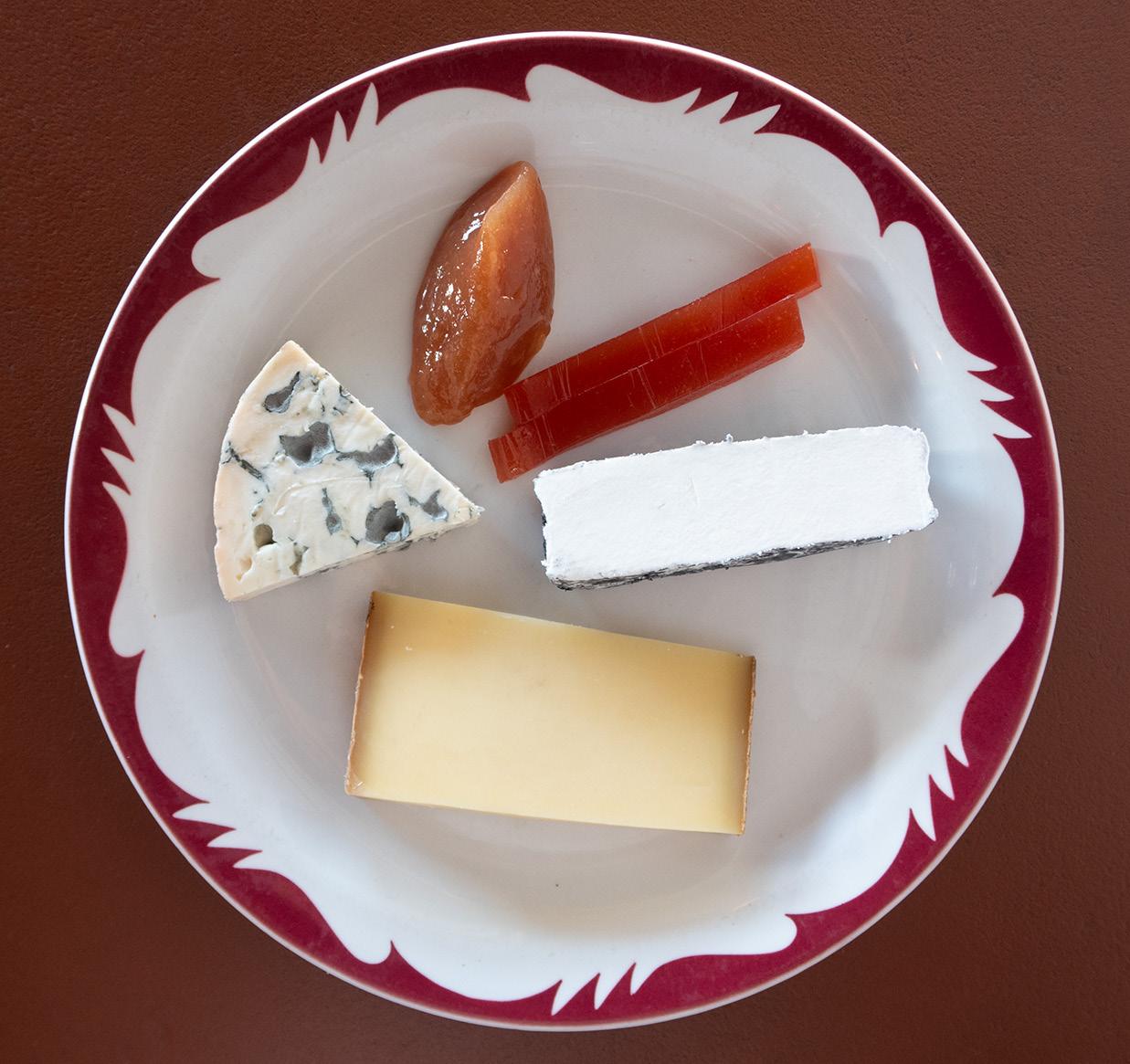
A dish of roasted heirloom carrots with carrot and brown butter purée, fried chickpeas, tahini, and chilli oil is an example of de Rancourt’s produce-first ethos along with a plate of burnt leeks teamed with mustard seed pickles, hazelnuts, fetta, and buttermilk. “The carrot and leek dishes are interesting because I try to use every part of the produce and minimise waste,” he says. “It’s about creating different layers like acidity and smoke, with the precise tastes hitting your mouth at different moments.”

Smaller bites are available throughout the day and cover Appellation oysters with lemongrass dressing; chickpea panisse with beetroot ketchup; sourdough toast with onion fondue, red cheddar, Serrano ham, and French mustard as well as a terrine pot au feu with baby gem and wasabi mayo. On the seafood front, de Rancourt has opted to serve tuna crudo style and accompany it with a red cabbage slaw and anchoiade, a French anchovy sauce.
The chef has been in the kitchen for a few months now, and so far, the feedback from guests has been positive. “What I am offering today is different to before and I am doing things my way,” says de Rancourt. “My cuisine is the result of my experience. I think finding your own style is the work of life.”
Snacks are available all day
Tuna crudo is teamed with a red cabbage slaw
de Rancourt is looking forward to adding more local fish to the menu
The chef completed a one-month stint at Bar Brutal




